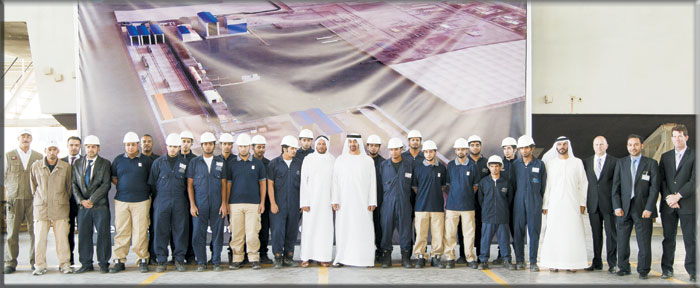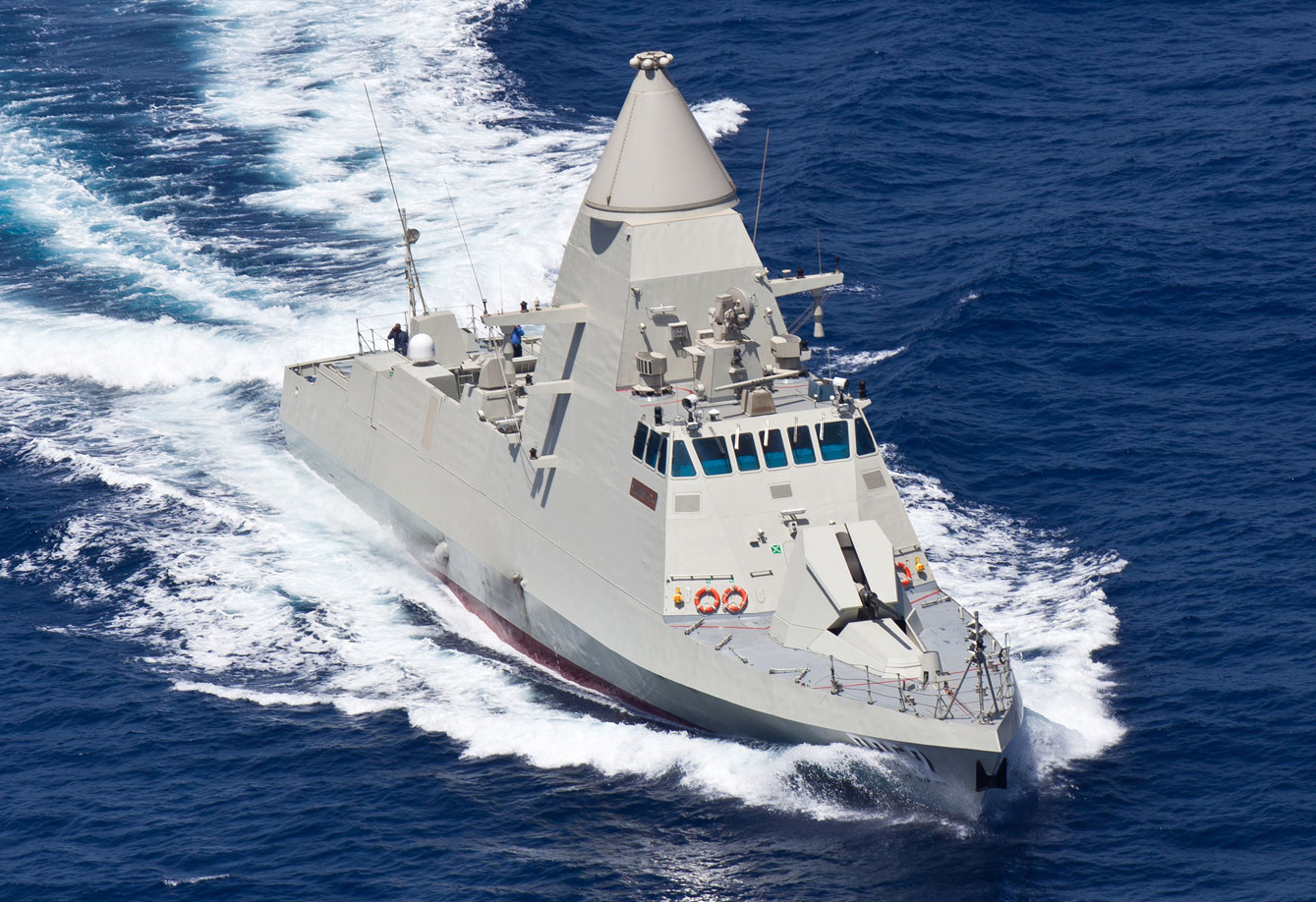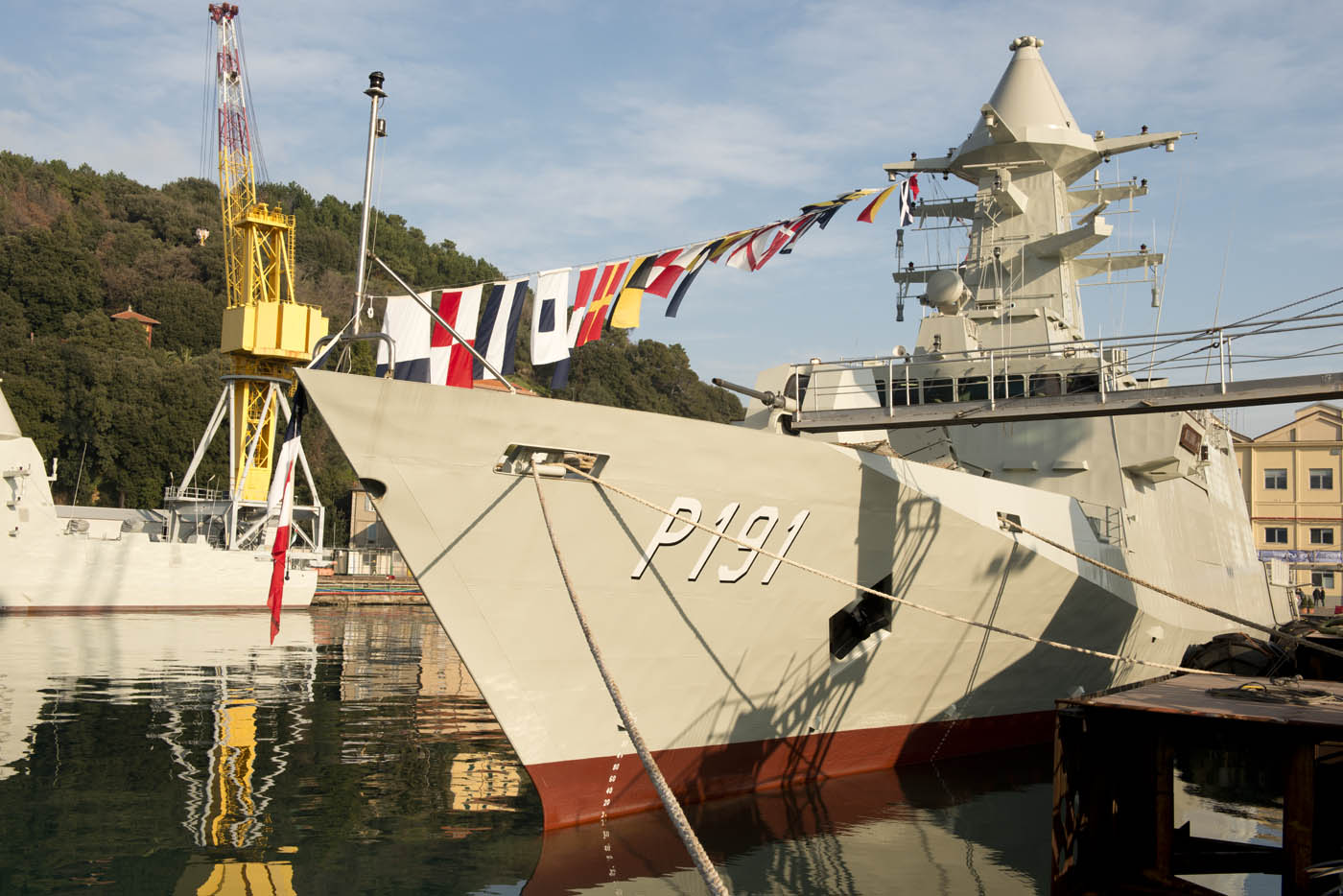ABU DHABI — The United Arab Emirates and Saudi Arabia are expected to launch discussions on submarine acquisitions “in the near future,” according to an executive with Italian shipbuilder Fincantieri.
Achille Fulfaro, Middle East naval executive for Fincantieri and general manager of Etihad Ship Building, said the two regional military powers are expected to examine small to medium submarines.
“One of the critical issues of the region is the anti-submarine issue and this is the reason why we delivered to the UAE Navy a highly developed anti-submarine warfare vessel last year,” Fulfaro said. “We assume that countries like Saudi Arabia and the UAE, in the near future, will start with deep discussions regarding their submarine fleet.”
He said the “discussions are very sensitive” because “we need to create in the country specific skills and know how to manage such an important fleet,” he added.
Representatives from the UAE and Saudi Arabia governments could not be reached for comment by press time.
Last year, UAE Naval Commander Rear Adm. Ibrahim al-Musharrakh said the UAE Navy is looking to acquire submarines to combat threats in the gulf’s littoral waters.
“There are many different options for combating the threat of submarines in the region, for building the capacity and the capability to acquire submarines is something that is still under process and will take a long time,” Musharrakh said at the Gulf Naval Commanders Conference in Abu Dhabi in November.
“What we need is something within reach that we can use to counter the threat now; in the long term, you will probably see naval forces in the region acquiring submarines,” he said.
In November, German government sources said Saudi Arabia wanted to buy five German submarines and more than two dozen more in the future, according to Bild newspaper.
The German-made Type 209 submarines were estimated at a cost of $3.4 billion, according to the newspaper.
One of the key factors in developing the submarines, Fulfaro said, would be the involvement of the Italian Navy.
“With the experience of the Italian Navy and with the existing cooperation with the UAE, we can create a program for the development of small submarines,” he said.
Fulfaro added that the requirement is expected to be for small to medium submarines th at are between 300 and 1,000 tons metric tons. “We assume that here in this region the core business is going to be small submarines.”
The Italian shipbuilder in 2010 established Etihad Ship Building, a joint venture with Al Fattan Shipyard and Melara Middle East. Last year, it delivered two Falaj-class stealth offshore patrol vessels and an Abu Dhabi-class stealth corvette.
According to Fulfaro, in 2013 Etihad Ship Building won a €100 million (US $135 million) contract for services, logistics and maintenance of combatant vessels.
“We signed the services contract and Fincantieri delivered the first Falaj-class and Abu Dhabi-class vessels with in the right timeframe and budget,” he said. “The trials phase has been completed with the complete satisfaction of the client and now we expect to close negotiations on further Falaj- and Abu Dhabi-class vessels,” he added.
The negotiations on the Falaj program are expected to be completed quickly, he said.
Furthermore, the company is planning to expand its presence in the Arabian Gulf.
Last year the company signed a contract with the Iraqi Navy for the maintenance of four patrol vessels at Etihad.
“For Qatar, Kuwait and Saudi Arabia in 2014, the negotiations will start and we will go in to deep analysis of their requirements and we hope to create the conditions for production,” he added.
Etihad facilities in Abu Dhabi will be the base of services and production; however, Fulfaro said his company is open to discussing specific programs or joint ventures if it is a requirement, then continue the Etihad joint venture model. ■
http://www.defensenews.com/article/...-Saudi-Arabia-Plan-Purchases?odyssey=nav|head
Achille Fulfaro, Middle East naval executive for Fincantieri and general manager of Etihad Ship Building, said the two regional military powers are expected to examine small to medium submarines.
“One of the critical issues of the region is the anti-submarine issue and this is the reason why we delivered to the UAE Navy a highly developed anti-submarine warfare vessel last year,” Fulfaro said. “We assume that countries like Saudi Arabia and the UAE, in the near future, will start with deep discussions regarding their submarine fleet.”
He said the “discussions are very sensitive” because “we need to create in the country specific skills and know how to manage such an important fleet,” he added.
Representatives from the UAE and Saudi Arabia governments could not be reached for comment by press time.
Last year, UAE Naval Commander Rear Adm. Ibrahim al-Musharrakh said the UAE Navy is looking to acquire submarines to combat threats in the gulf’s littoral waters.
“There are many different options for combating the threat of submarines in the region, for building the capacity and the capability to acquire submarines is something that is still under process and will take a long time,” Musharrakh said at the Gulf Naval Commanders Conference in Abu Dhabi in November.
“What we need is something within reach that we can use to counter the threat now; in the long term, you will probably see naval forces in the region acquiring submarines,” he said.
In November, German government sources said Saudi Arabia wanted to buy five German submarines and more than two dozen more in the future, according to Bild newspaper.
The German-made Type 209 submarines were estimated at a cost of $3.4 billion, according to the newspaper.
One of the key factors in developing the submarines, Fulfaro said, would be the involvement of the Italian Navy.
“With the experience of the Italian Navy and with the existing cooperation with the UAE, we can create a program for the development of small submarines,” he said.
Fulfaro added that the requirement is expected to be for small to medium submarines th at are between 300 and 1,000 tons metric tons. “We assume that here in this region the core business is going to be small submarines.”
The Italian shipbuilder in 2010 established Etihad Ship Building, a joint venture with Al Fattan Shipyard and Melara Middle East. Last year, it delivered two Falaj-class stealth offshore patrol vessels and an Abu Dhabi-class stealth corvette.
According to Fulfaro, in 2013 Etihad Ship Building won a €100 million (US $135 million) contract for services, logistics and maintenance of combatant vessels.
“We signed the services contract and Fincantieri delivered the first Falaj-class and Abu Dhabi-class vessels with in the right timeframe and budget,” he said. “The trials phase has been completed with the complete satisfaction of the client and now we expect to close negotiations on further Falaj- and Abu Dhabi-class vessels,” he added.
The negotiations on the Falaj program are expected to be completed quickly, he said.
Furthermore, the company is planning to expand its presence in the Arabian Gulf.
Last year the company signed a contract with the Iraqi Navy for the maintenance of four patrol vessels at Etihad.
“For Qatar, Kuwait and Saudi Arabia in 2014, the negotiations will start and we will go in to deep analysis of their requirements and we hope to create the conditions for production,” he added.
Etihad facilities in Abu Dhabi will be the base of services and production; however, Fulfaro said his company is open to discussing specific programs or joint ventures if it is a requirement, then continue the Etihad joint venture model. ■
http://www.defensenews.com/article/...-Saudi-Arabia-Plan-Purchases?odyssey=nav|head













